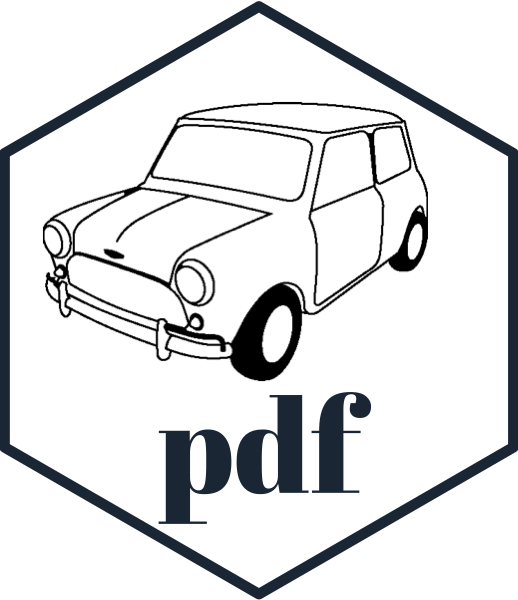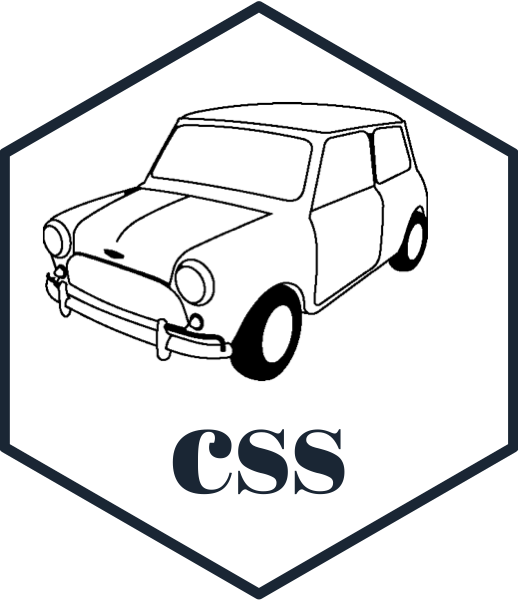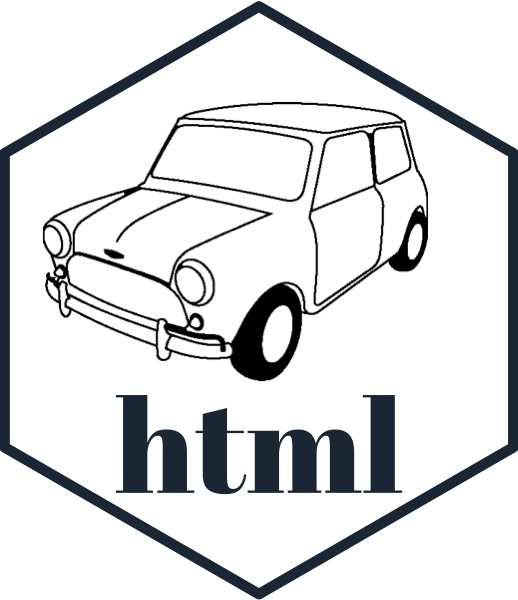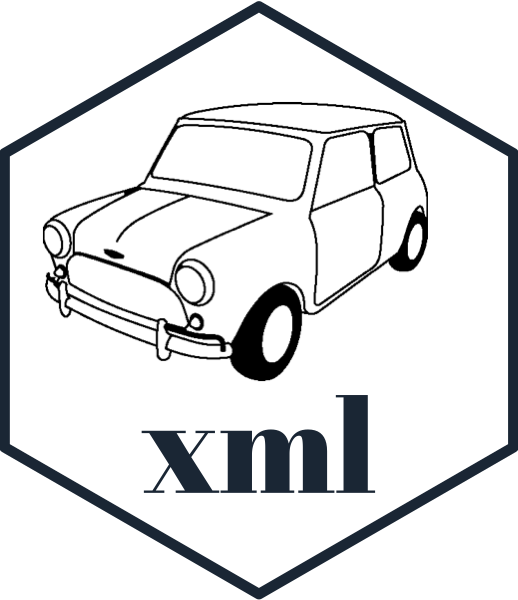miniverse 


The miniverse is a constellation of packages for creating documents within R.
The purpose of this miniverse package is to:
- Highlight the common interface used across the packages
- Provide links to the various packages
Installation
You can install miniverse from GitHub with:
# install.packages("devtools")
devtools::install_github("coolbutuseless/minipdf")
devtools::install_github("coolbutuseless/minihtml")
devtools::install_github("coolbutuseless/minicss")
devtools::install_github("coolbutuseless/miniverse") Create PDF documents Github Online documentation |
 Create CSS Github Online documentation |
 Create HTML documents Github Online documentation |
 Create XML documents Github Online documentation |
 Create SVG documents Github Online documentation |
High level document description
- A document is a tree of objects, with a a document node at the root, and element nodes branching from this.
- A document is represented by a document class e.g.
HTMLDocument() - Each thing within a document is represented by an element class e.g.
HTMLElement() - Documents and Elements contain:
- attributes - information about the item
- children - nested sub-elements of this element
Initialising a new document
New documents can usually be initialised in 2 ways:
- R6 object initialisation
- A function call (which just wraps the R6 initialisation call)
| package | Document R6 initialisation | Document function init |
|---|---|---|
| minipdf | PDFDocument$new() |
pdf_doc() |
| minicss | StyleSheet$new() |
css_stylesheet() |
| minihtml | HTMLDocument$new() |
html_doc() |
| minixml | XMLDocument$new() |
xml_doc() |
| minisvg | SVGDocument$new() |
svg_doc() |
Initialising a bare element
A bare element can usually be initialised in 3 ways:
- R6 object initialisation
- A function call (which just wraps the R6 initialisation call)
- Using a tag helper method which wraps the R6 initialisation call for a lot of standard elements. This usually includes autocomplete for the arguments for each element.
| package | Element R6 initialisation | Document function init | Helper |
|---|---|---|---|
| minipdf | PDFCircle$new(), PDFRect$new(), etc |
pdf_doc() |
ptag$circle(), ptag$rect(), etc |
| minicss | Style$new() |
css_style() |
|
| minihtml | HTMLElement$new() |
html_elem() |
htag$title(), htag$div(), etc |
| minixml | XMLElement$new() |
xml_elem() |
|
| minisvg | SVGElement$new() |
svg_elem() |
stag$circle(), stag$rect(), etc |
Appending an element to an existing element or document
After appending a new element, the returned value is the document that was being appended to.
| package | Append bare element to current element |
|---|---|
| minipdf | PDFCircle$append(), PDFRect$append(), etc |
| minicss | Style$append() |
| minihtml | HTMLElement$append() |
| minixml | XMLElement$append() |
| minisvg | SVGElement$append() |
Creating an element directly within an existing element or document
After creating a new element within an existing element, it is the new element that is returned.
| package | Create element within existing element (specific) | Create element within existing element (generic) |
|---|---|---|
| minipdf | PDFDocument$circle(), PDFDocument$rect(), etc |
|
| minicss | StyleSheet$add() |
|
| minihtml | HTMLElement$div(), HTMLDocument$title(), etc |
HTMLElement$add(), HTMLDocument$add(), etc |
| minixml | XMLElement$add(), XMLDocument$add(), etc |
|
| minisvg | SVGElement$circle(), SVGDocument$rect() |
SVGElement$add(), SVGDocument$add(), etc |
Update attributes and Add Child Elements
In general when calling $update() on a document or element:
- Named arguments are added as attributes of the element
- Unnamed arguments are added as children of the element
| package | Update attributes and add child elements |
|---|---|
| minipdf | PDFCircle$update(), PDFRect$update(), etc |
| minicss | Style$update() |
| minihtml | HTMLElement$update(), HTMLDocument$update() |
| minixml | XMLElement$update(), XMLDocument$update() |
| minisvg | SVGElement$update(), SVGDocument$update() |
Logo
The logo for all the miniverse packages include a drawing of a Mini Cooper S.